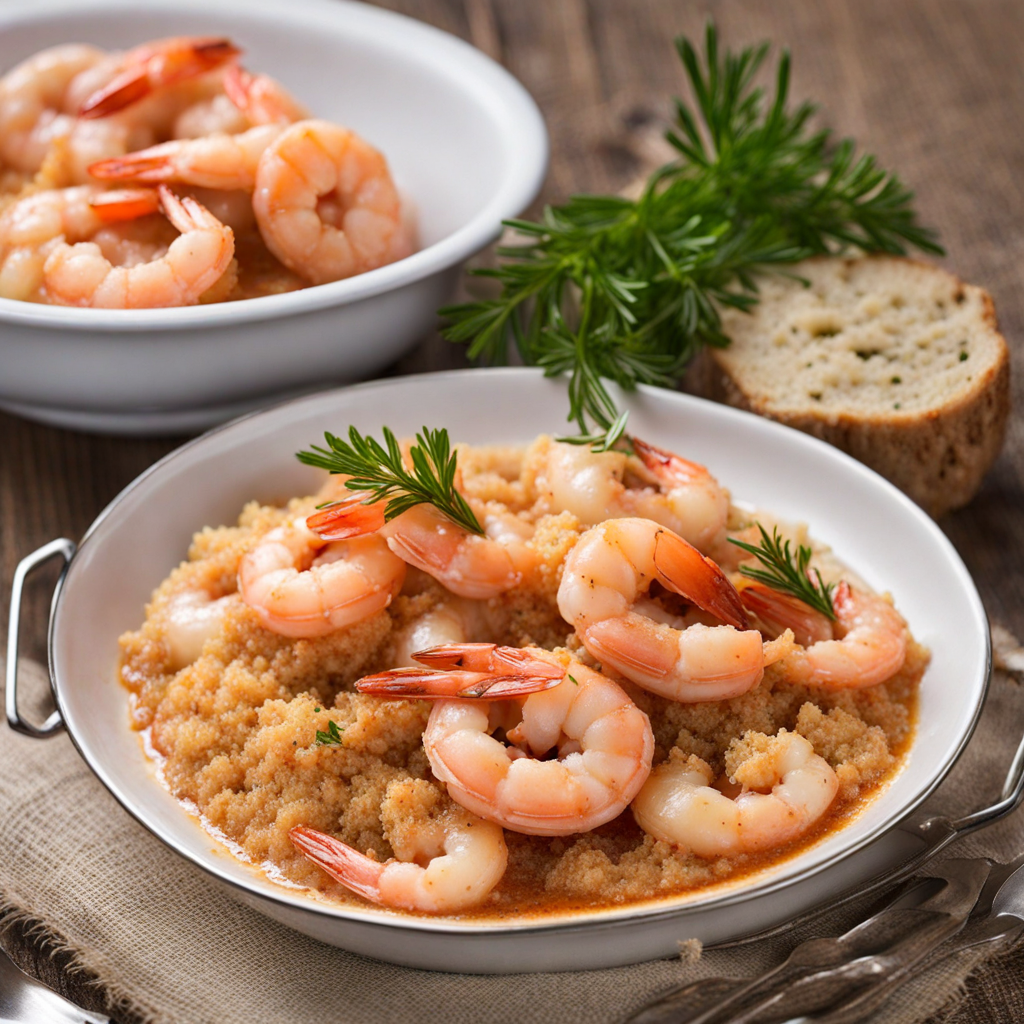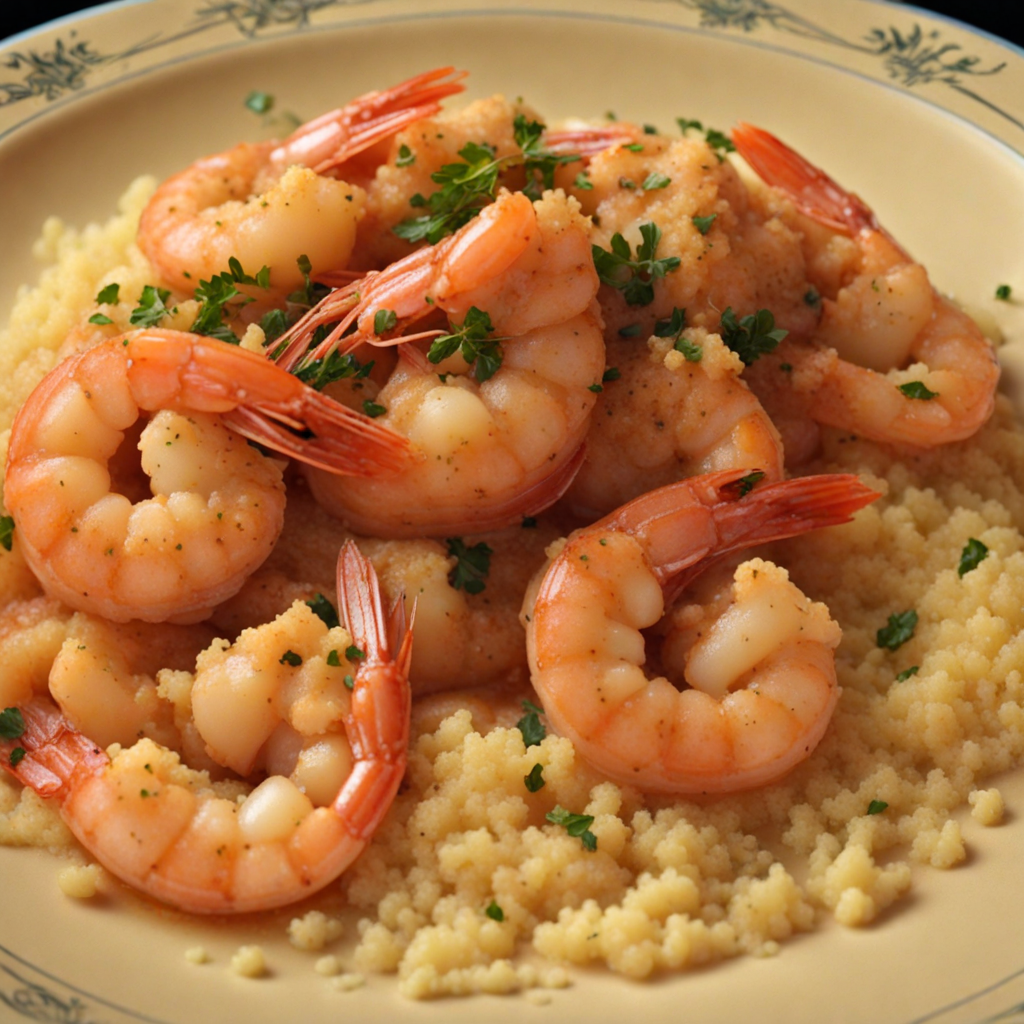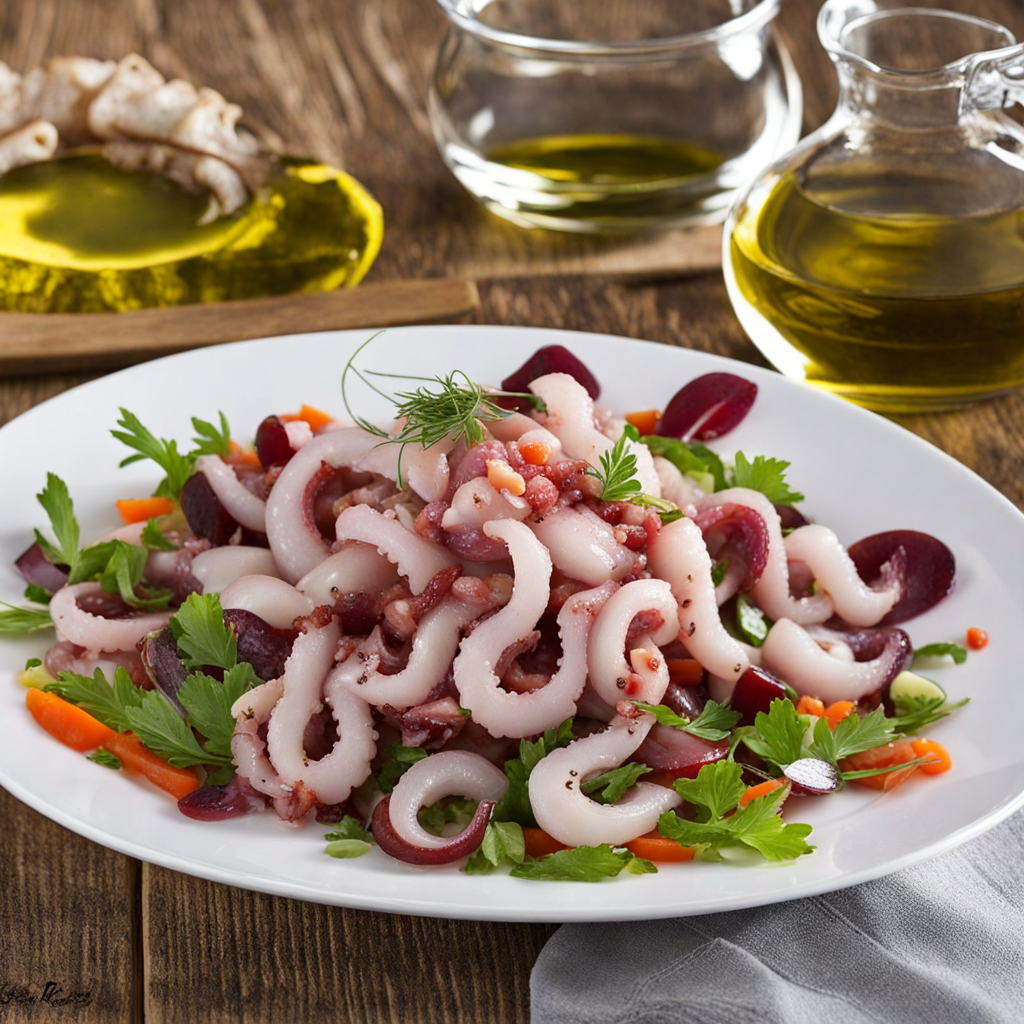Škampi na buzaru
Škampi na buzaru is a delightful Croatian dish that showcases the rich flavors of the Adriatic Sea through its succulent scampi, or shrimp. The dish is typically prepared using fresh, large scampi, which are known for their sweet and tender meat. The crustaceans are sautéed in a fragrant mixture of olive oil, garlic, and parsley, which creates a mouthwatering aroma that fills the kitchen. This simple yet elegant preparation allows the natural sweetness of the scampi to shine, while the garlic and parsley add depth and freshness to the dish. The key to a perfect Škampi na buzaru lies in the addition of white wine and tomatoes, which create a delicious sauce that complements the scampi beautifully. The wine not only enhances the dish with a touch of acidity but also helps to deglaze the pan, capturing all the flavorful bits left behind during the cooking process. As the tomatoes break down, they meld with the other ingredients to form a rich, savory sauce that coats the scampi perfectly, inviting you to savor every bite. Served with crusty bread, it’s an ideal way to soak up the delectable sauce and enjoy the complete experience of this coastal delicacy. This dish is often enjoyed as part of a larger meal, accompanied by traditional sides such as polenta or a fresh salad. Its vibrant flavors and appealing presentation make it a favorite among both locals and visitors alike. Škampi na buzaru is not just a dish; it’s a celebration of Croatian culinary culture, reflecting the country’s deep connection to the sea and its bounty. Whether enjoyed in a seaside restaurant or recreated at home, this dish promises to transport your taste buds to the sun-soaked shores of Croatia.
How It Became This Dish
The History of Škampi na Buzaru: A Culinary Delight from Croatia #### Origins and Ingredients Škampi na buzaru, a delectable dish from the Croatian coastal region, epitomizes the culinary traditions of the Adriatic Sea. The dish is primarily made with scampi, a type of crustacean known for its sweet, delicate flavor and firm texture. The name "buzaru" refers to both the cooking method and the pot used for preparation, which is typically a shallow, wide vessel that allows for even cooking and infusion of flavors. The origins of scampi can be traced back to ancient Mediterranean practices where seafood played a pivotal role in local diets. Scampi, or "langoustines," are particularly abundant in the Adriatic Sea, where they have been harvested by local fishermen for centuries. The ancient Greeks and Romans were known to enjoy seafood, and as trade routes expanded, the appreciation for crustaceans spread throughout the Mediterranean. The word "buzara" is derived from the Italian "buzara," a cooking method that employs a combination of olive oil, garlic, wine, and herbs. This technique highlights the simplicity and freshness of the ingredients, a hallmark of Mediterranean cuisine. As the dish evolved, it absorbed influences from the diverse cultures that have shaped the Croatian coastline, including Italian, Austro-Hungarian, and Ottoman culinary traditions. #### Cultural Significance Škampi na buzaru is more than just a dish; it is a representation of Croatian coastal culture and a celebration of the region’s natural bounty. Seafood has long been a staple in Dalmatia, the southern region of Croatia where the dish is most commonly prepared. The Adriatic Sea provides a rich source of fish, shellfish, and crustaceans, which are integral to the local economy and cuisine. Fishing communities, with their deep-rooted traditions, have passed down recipes and cooking techniques through generations, making dishes like škampi na buzaru a cherished part of their heritage. In Croatian culture, meals are often communal, bringing families and friends together to enjoy the fruits of their labor. Škampi na buzaru is frequently served during festive occasions, family gatherings, and summer celebrations, emphasizing the importance of togetherness and shared experiences. The dish is typically accompanied by a glass of local white wine, enhancing the flavors and creating a perfect harmony between food and drink. #### Development Over Time As Croatia’s culinary scene has evolved, so too has the preparation of škampi na buzaru. While traditional recipes still dominate, contemporary chefs have embraced innovation, experimenting with new ingredients and presentation styles. The traditional preparation involves sautéing the scampi in olive oil with garlic and parsley, then deglazing the pan with white wine and simmering until the flavors meld beautifully. This method remains popular, but modern chefs have found creative ways to enhance the dish. For instance, some have introduced a touch of spice by adding red pepper flakes or incorporating seasonal vegetables like cherry tomatoes and zucchini. Others play with the textures by serving the scampi atop a bed of creamy polenta or alongside fresh homemade pasta. These adaptations reflect a growing trend in Croatian gastronomy, where chefs honor traditional dishes while also embracing contemporary culinary techniques. The resurgence of interest in local, sustainable ingredients has also influenced the preparation of škampi na buzaru. Many chefs now prioritize sourcing scampi from local fishermen, ensuring that the dish not only supports the local economy but also adheres to sustainable fishing practices. This focus on freshness, sustainability, and locality aligns with the broader movement in the culinary world toward farm-to-table dining. #### Global Recognition In recent years, Croatian cuisine has gained international recognition, thanks in part to the country’s burgeoning tourism industry. Places like Dubrovnik, Split, and Zadar have become culinary hotspots, attracting food enthusiasts eager to explore the flavors of the Adriatic. Škampi na buzaru has emerged as a must-try dish for visitors, showcasing the rich culinary heritage of the region. Food festivals and culinary events celebrating Croatian cuisine have further elevated the status of dishes like škampi na buzaru. Chefs and food ambassadors from Croatia have participated in international food fairs, sharing their knowledge and passion for local ingredients and traditional cooking methods. This cultural exchange has introduced the dish to a wider audience, allowing it to transcend geographical boundaries while maintaining its authentic roots. #### Recipes and Variations While the basic elements of škampi na buzaru remain consistent, regional variations can be found throughout Croatia. In Istria, for example, chefs may incorporate Istrian olive oil, known for its robust flavor, while Dalmatian variations might include fresh herbs such as fennel or even a splash of brandy for added depth. Each region’s interpretation of the dish reflects its unique terroir and culinary influences. A classic recipe for škampi na buzaru might include the following ingredients: - 500 grams of scampi - 4 tablespoons of olive oil - 4 cloves of garlic, minced - A handful of fresh parsley, chopped - 150 ml of dry white wine - Salt and pepper to taste - A hint of red pepper flakes (optional) The preparation involves heating the olive oil in the buzara pot, adding the minced garlic, and sautéing until fragrant. The scampi are then added, seasoned with salt and pepper, and briefly cooked before deglazing the pot with white wine. After simmering until the scampi are cooked through, fresh parsley is added just before serving. #### Conclusion Škampi na buzaru is a dish that embodies the spirit of Croatian coastal cuisine, weaving together threads of history, culture, and modern gastronomy. Its origins in the rich waters of the Adriatic and its evolution through culinary traditions reflect the resilience and creativity of Croatian chefs. As this dish continues to capture the hearts and palates of locals and visitors alike, it stands as a testament to the enduring legacy of Croatian culinary heritage, a delicious bridge connecting the past with the future of food. Whether enjoyed in a rustic seaside konoba or an upscale restaurant, škampi na buzaru remains a beloved symbol of the Adriatic's culinary prowess.
You may like
Discover local flavors from Croatia







